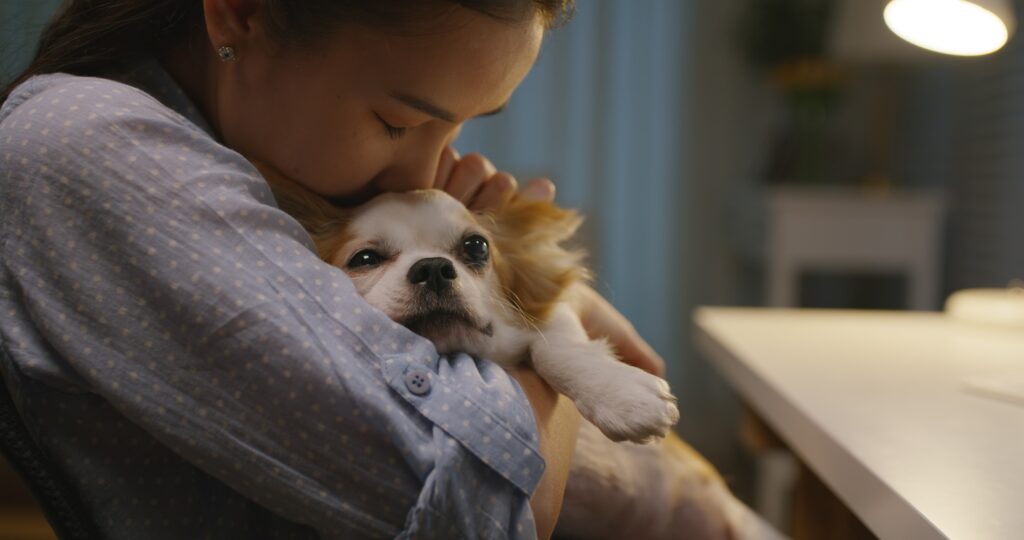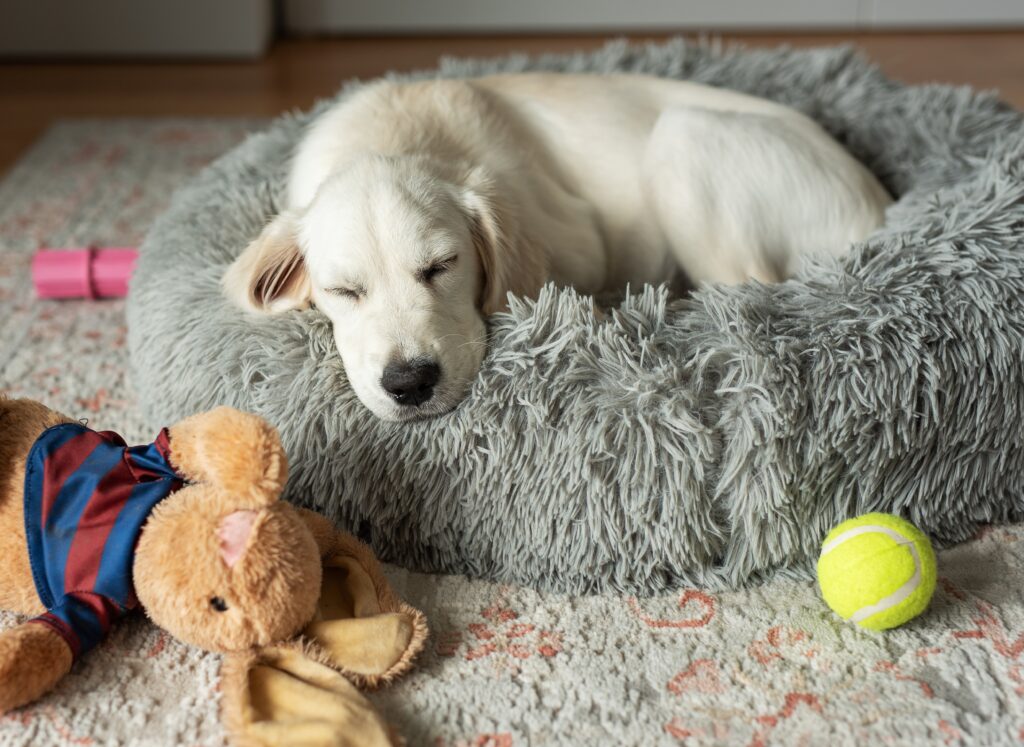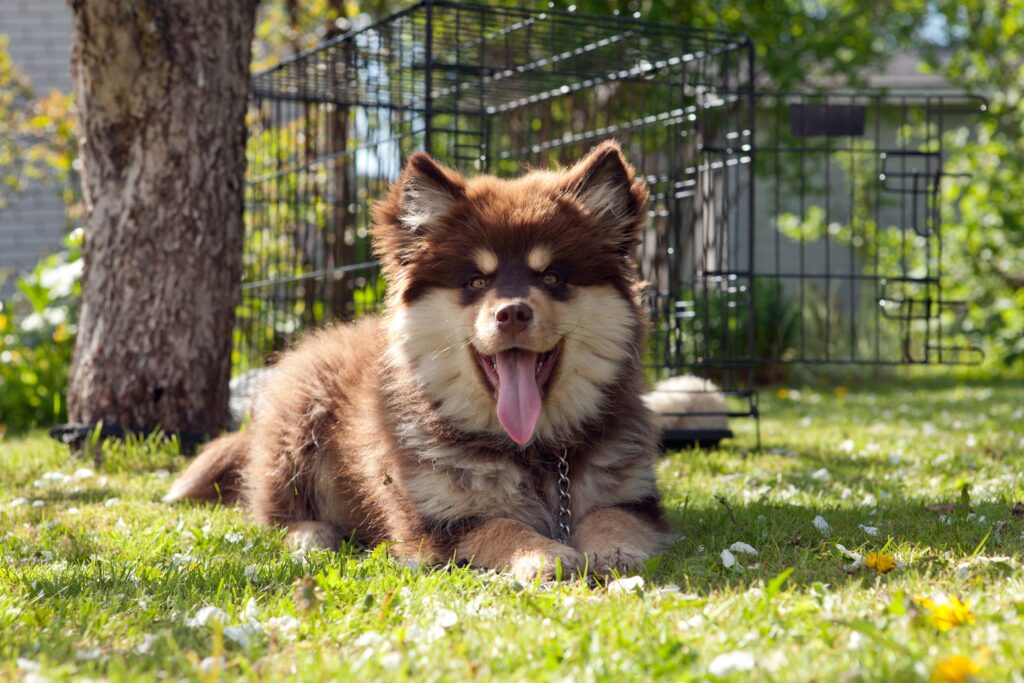The amount of time a puppy can safely be left alone during the day depends on their age, temperament, and training. Puppies, especially younger ones, need frequent attention, potty breaks, and social interaction to ensure they grow into well-adjusted dogs.
Here’s a breakdown of the guidelines based on age and a few key considerations…
General Guidelines by Age
8–10 Weeks (2–2.5 months)
- Maximum Alone Time – No more than 1–2 hours at a time.
- Why – At this age, puppies are still very dependent on their caregivers. They need frequent potty breaks (every 1–2 hours), are not fully house-trained, and can experience separation anxiety if left alone for too long. Their bladder control is still developing, so accidents are likely.
10–12 Weeks (2.5–3 months)
- Maximum Alone Time – Up to 3–4 hours at a time.
- Why – While still relatively young, puppies can begin to tolerate slightly longer periods alone, but they still need regular potty breaks and companionship. You should still plan for someone to come home and take them outside or provide a potty break if you’re gone for extended hours.
4–6 Months
- Maximum Alone Time – Up to 4–5 hours at a time.
- Why – By this age, puppies are developing better bladder control and can manage a longer stretch alone, but they still need socialization and mental stimulation. Separation anxiety may still be an issue, and they need regular interaction to remain well-behaved.
6–9 Months
- Maximum Alone Time – 5–6 hours at a time.
- Why – As puppies approach adolescence, their bladder control improves, and they can tolerate more alone time, but they still need plenty of exercise and mental stimulation. Leaving them alone for 6+ hours regularly can lead to boredom, destructive behavior, and increased anxiety.
9+ Months (Adult Dogs)
- Maximum Alone Time – 6–8 hours at a time (with appropriate accommodations).
- Why – Most adult dogs can handle 6–8 hours alone, but it should still be broken up by breaks for bathroom, exercise, and socialization. If you must leave your dog alone for long periods, consider arranging for a dog walker, neighbor, or pet sitter to come in and provide a potty break and some company.
Key Considerations
- Bladder Control & Potty Needs – Puppies have small bladders, and they need frequent potty breaks, especially during the first 4–6 months. If you’re gone for long stretches, you should consider a puppy-proofed area (like a crate or pen) with puppy pads, or arrange for someone to take them out.
- Separation Anxiety – Younger puppies (under 12 weeks) are particularly vulnerable to separation anxiety. Gradually building up time alone through crate training or short absences can help ease this transition.
- Mental Stimulation & Boredom – Puppies need mental stimulation, not just potty breaks. Without proper mental engagement, they can get bored and start destructive behaviors like chewing on furniture, shoes, or other items. To prevent this, provide safe chew toys, puzzle feeders, or interactive toys.
- Exercise Needs – Puppies have a lot of energy, and if they don’t get enough exercise, they may become frustrated and act out when left alone. Try to ensure they get a good walk or play session before being left alone. For older puppies, doggy daycare or a midday dog walker can help break up the day.
- Crate Training – If you’re crate training, puppies should only be left in their crate for about 3–4 hours at a time, especially when they’re younger. Over-crating can be harmful to their emotional and physical development. Make sure they have room to stretch, move around, and have access to water.
- Gradual Independence – It’s crucial to gradually increase the time your puppy is left alone. This helps them adjust and avoid anxiety. Start with short departures and slowly build up to longer periods, always ensuring they’re comfortable and not stressed.
What Can You Do If You Need to Be Away Longer?
- Hire a Dog Walker or Pet Sitter – If you’re away for a workday, arranging for someone to come in and walk or play with your puppy can help break up the time and provide a potty break.
- Doggy Daycare – Some people use doggy daycare, especially for high-energy puppies who need socialization and exercise.
- Consider Crate-Free Options – If you’re leaving them alone for a few hours, using a puppy-proofed room or pen with access to water, toys, and a potty area can help keep them comfortable and safe.
In Summary
- Under 10 weeks – Aim for 1–2 hours alone at a time.
- 10–12 weeks – Aim for 3–4 hours alone.
- 4–6 months – Can tolerate 4–5 hours alone.
- 6–9 months – Up to 5–6 hours alone.
- Adult dogs – 6–8 hours, but with accommodations like breaks for bathroom and exercise.
Puppies need a lot of care and attention, especially early on, so if you have a busy schedule, it’s crucial to plan ahead to meet their needs and avoid behavioral issues down the road.


